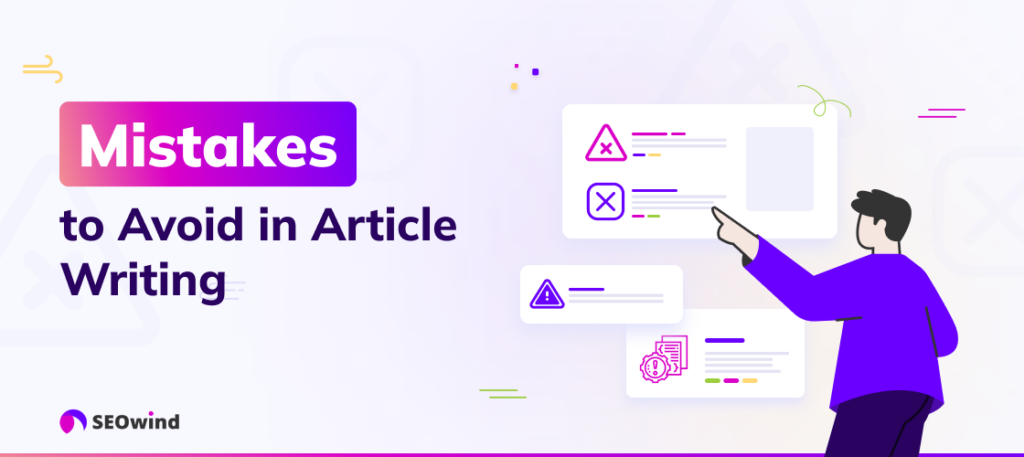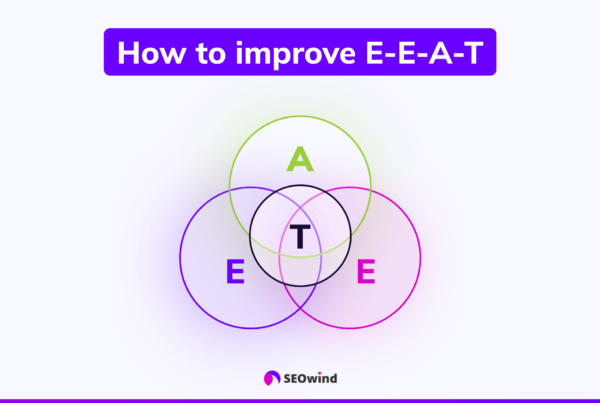Writing an article that actually ranks and resonates isn’t about tossing a prompt into ChatGPT and hoping for magic. It’s a structured, multi-step process that needs real strategy, deep research, and human expertise at every stage. Whether you’re pursuing writing as a hobby or building it into a career, understanding how to write an article that cuts through the noise requires more than basic knowledge. It demands a proven methodology.
The stakes are higher than ever.
Content marketing generates 3 times the number of leads compared to outbound marketing while costing 62% less (Source: Demand Metric), making it one of the most cost-effective strategies available. Yet, as CMI’s annual B2B Content Marketing Benchmarks, Budgets, and Trends: Outlook for 2025 reports, only 29% of marketers with a documented content strategy say it’s extremely or very effective. The gap between mediocre and exceptional results? Following a systematic approach that combines strategic planning with flawless execution.
This guide walks you through the exact process I’ve refined through years of content creation experience, incorporating proven methodologies that separate amateur writers from professionals who consistently produce articles that rank, engage, and convert.

Step 1: Understand Your Target Audience
FirsHigh-quality content starts with human strategy, and that strategy begins with knowing exactly who you’re writing for. 47% of marketers found that audience research is key to content marketing success. Yet, most writers skip this crucial first step and jump straight into writing.
Here’s what separates successful content creators: They don’t just understand demographics. They decode pain points, search behaviors, content preferences, and the specific problems their readers are desperately trying to solve.
The Research Arsenal That Actually Works
BuzzSumo reveals what content types resonate with similar audiences by analyzing the most shared articles in your niche. You’ll discover content gaps and opportunities by examining viral content patterns and engagement metrics across different platforms.
Ahrefs provides comprehensive keyword research and competitor insights that show what your audience actually searches for. Beyond basic keyword data, analyze your competitors’ top-performing content to understand what topics drive the most organic traffic in your space.
Semrush provides powerful demographic analysis through its Topic Research tool, enabling you to map content strategies to specific audience interests while monitoring real-time performance across your industry.
Key Insight: Create personas that include content consumption patterns, preferred article formats, expertise levels, and typical content journey stages. This depth directly impacts how you structure content and craft messaging that converts.
💡 TAKEAWAY: Successful articles start with audience research that goes beyond demographics. Focus on pain points, search behaviors, and content preferences to build personas that guide every writing decision.
Step 2: Select a Topic: Where Winners and Losers Are Decided
Your topic choice determines whether your article disappears into the content void or cuts through the noise. The best topics address specific audience problems while leveraging opportunities competitors have missed.
Start by analyzing search intent. Are people looking for informational content, comparison guides, or step-by-step tutorials? Understanding intent helps you format articles correctly and meet reader expectations from the first paragraph.
Use keyword clustering to identify related topics you can comprehensively cover within a single article. This approach, supported by current SEO best practices, helps you create authoritative content that ranks for multiple related queries while providing comprehensive value.
The 2025 Reality Check: 83% of marketers find that creating higher-quality content less frequently is far more effective than publishing lower-quality content more often. Quality over quantity isn’t just a nice idea. It’s what actually drives results.
Step 3: Research is Key
Think of research as 80% of the job. This is where your competitive edge is built: not just chasing keywords but decoding what Google rewards and spotting gaps that competitors haven’t filled.
The 10:1 Research Rule That Pros Follow
Professional content creators read ten articles for everyone they write. This intensive approach ensures you understand the topic landscape, identify unique angles, and avoid simply rehashing existing content.
- SERP Analysis and Competitive Intelligence form your foundation. Analyze the top 10 results for your target keyword to understand what Google considers high-quality content. Look for common themes, content gaps, and opportunities to provide more comprehensive or updated information.
- Source Evaluation and Fact-Checking require clear criteria for authoritative sources. Prioritize recent studies from reputable institutions, government databases, industry reports from recognized authorities, and peer-reviewed research. Always verify statistics through multiple sources.
- An expert quote and Citation Strategy add authority, separating professional content from amateur attempts. Reach out to industry experts for quotes, reference established thought leaders appropriately, and ensure all citations link to authoritative sources.
💡 TAKEAWAY: Research isn’t just gathering information. It’s building competitive intelligence. The 10:1 rule (read 10 articles for every 1 you write) ensures a comprehensive understanding of the topic and identification of a unique angle.
Step 4: Write a Comprehensive Content Brief
A detailed brief serves as the blueprint for your article, preventing scope creep and ensuring comprehensive coverage. Include target audience definition, primary and secondary keywords, key points to cover, content structure, required word count, and success metrics.
SEOwind excels at this phase by pulling SERP data, keyword insights, competitor outlines, and FAQs from sources like Reddit and Quora into a single, actionable brief. Instead of juggling multiple tools, you get a strategic foundation before writing begins.
Step 5: Write Your Firts Draft and Proofread
Focus on getting ideas down, following your outline closely. Don’t get stuck finding perfect words during your initial draft. Professional writers set word count goals and section deadlines to maintain momentum throughout the process.
Step 6: Add Supporting Elements That Build Authority
Integrate research findings, statistics, quotes, and examples that support your main points. This is where comprehensive research pays off, providing evidence that separates expert content from generic advice.
Introduce visuals such as images, infographics, or videos into your piece to break text monotony and increase comprehension. They provide aesthetic relief while supporting the main ideas, increasing overall engagement.
Remember to source royalty-free images or get permission for copyrighted ones—you don’t want legal battles later!
Step 7: Optimize for Readability and Human Connection
Break up large text blocks with subheadings, bullet points, and visual elements to create a more engaging layout. Add transitional phrases between sections, vary sentence length to create rhythm, and ensure tone consistency throughout.
Critical insight: 82% of customers feel more positive about a business after reading their custom content, proving that quality content directly impacts brand perception (Source: Demand Metric).
💡 TAKEAWAY: Follow the 7-step process systematically: Target audience → Topic selection → Research → Strategic brief → First draft → Supporting elements → Readability optimization. Each step builds on the previous foundation.
SEO Integration That Doesn’t Sacrifice Readability
SEO isn’t an afterthought. It’s built into every stage of the writing process. The most successful content creators integrate optimization from the initial planning stage through to the final publication.
Advanced Keyword Strategy Beyond Basic Placement
Effective optimization extends far beyond simply incorporating target phrases into titles and first paragraphs. Modern SEO requires an understanding of keyword clusters, search intent, and the semantic relationships between related terms.
Start with comprehensive research using tools like Ahrefs or SEMrush to identify primary keywords, related secondary terms, and long-tail variations that your audience actually searches for. Analyze difficulty and search volume, but also consider the business value and relevance to your expertise.
Implementation that works: Primary keywords should appear in titles (within the first 60 characters), at least one H2 heading, introduction, and conclusion. Secondary keywords support subheadings and body content without forced repetition.
Technical Elements That Impact Rankings
Title Optimization requires balancing keyword inclusion with compelling copy that encourages clicks. Keep titles between 50 and 60 characters, ensuring they accurately represent the unique value proposition of your content.
URL Structure and Internal Linking support both user experience and search engine understanding. Create clean, descriptive URLs that include primary keywords, and develop internal linking strategies that connect related content while distributing page authority.
The header structure should follow a logical hierarchy, with primary keywords in H1 titles and related terms in H2 and H3 subheadings. This helps both readers and search engines understand content organization.
How to Write an Article with SEOwind AI Writer?

Most tools generate generic content because they lack insight into what your audience wants, what your competitors are doing, or how Google ranks content. SEOwind AI Article Writer does.
It starts with data-driven research: pulling live SERP results, analyzing competitor content, identifying keyword clusters, and scraping audience questions from Google, Reddit, and Quora. It builds a strategic brief before a single word gets written.
This is AI that thinks before it writes.
Here’s how it works:
Step 1: AI Research – The Real SEO Starting Line
Every great article starts with research. But not the copy-paste kind.
SEOwind’s AI Research Agent scans SERPs, top-performing content, and content hubs to:
- Analyze keyword intent and clustering
- Surface trending subtopics and questions
- Identify content gaps and angles
- Find relevant sources, stats, and examples
This gives you a data-driven foundation for content that’s actually in demand, not guesswork.
Step 2: AI Briefing – Turn Data into Direction
With the research in hand, SEOwind builds a strategic content brief that maps out your article from top to bottom.
It includes:
- Optimized headlines and structure
- SEO targets (primary/secondary keywords, clusters)
- SERP-informed subtopics and questions
- EEAT guidance built-in
- FAQs sourced from Reddit, Quora, Google PAA
And yes, you can add your own:
- Brand voice (via text samples)
- Company/product info
- Google Search Console integration for internal linking
- Unique insights and POVs that make content yours
The result? A brief that gives AI clear instructions and makes content creation faster, smarter, and more aligned.
Step 3: AI Research (Again) – For Deeper, Smarter Insight
One research pass isn’t enough.
SEOwind runs a second round of AI research via our Autonomous Research Agent to:
- Validate insights
- Fill in missing angles
- Add more depth and supporting evidence
- Ensure topic coverage is comprehensive
This is how we move from “good enough” to best in class.
Step 4: AI Article Drafting – Fast First Drafts That Don’t Suck
Now that the AI knows exactly what to write, it generates the first draft, section-by-section or all at once.
It follows the:
- Data-backed brief
- Brand tone and voice
- Strategic structure and SEO goals
This draft is never the final version but it’s solid, logical, and 80% there. That’s the power of context-fed AI.
Step 5: AI Evaluation & Refinement – No More Half-Baked Drafts
This is where most people stop. We don’t.
SEOwind uses its AI Eval & Refine Agent to:
- Review the article for clarity, structure, tone, and keyword coverage
- Flag weak areas, missing info, or off-brand copy
- Suggest rewrites using AI-generated feedback
- Gather additional data to enhance EEAT and SEO alignment
Now, your article is optimized and elevated.
Step 6: Internal Linking – Build Authority from Within
Internal links are often an afterthought. Not here.
With GSC integration, SEOwind:
- Find contextual internal link opportunities as you write
- Recommends anchor text and target pages
- Strengthens topical authority site-wide
This improves crawlability, SEO performance, and user engagement—without extra manual work.
Step 7: Human Editing – Where AI Meets Strategy
No AI can replace your voice, insight, or experience. Final edits bring it all together.
Here’s where you are:
- Refine tone, flow, and phrasing
- Insert personal anecdotes, case studies, or expert insights
- Double-check accuracy, SEO details, and formatting
- Polish for readability and impact
The result? Content that ranks like a machine but connects like a human.
A quick product tour on how to create AI articles below
The SEOwind Difference
Most AI content systems are one-and-done. SEOwind is a layered strategy engine that:
- Uses AI agents for research, writing, and review
- Bakes data and intent into every step
- Blends human creativity and machine scale
This isn’t random content generation. It’s systemized execution with real SEO impact.

Proven Case Studies: When Methodology Meets Measurable Results
Real-world examples show why structured approaches consistently outperform ad-hoc methods. These case studies from 2023 to 2025 reveal exactly what happens when companies implement systematic content writing methodologies.
Case Study 1: Smartling’s Product-Led Content Strategy
The Challenge: Smartling, a language translation platform, struggled with low organic traffic and poor conversions despite having quality products.
The Methodology: Working with Omniscient Digital, they implemented a structured approach that included in-depth audience research, existing content audits using analytics tools, and subject matter expert interviews. Their strategy focused on product-led SEO, creating targeted content that matched high-intent searchers with specific pain points.
The Results:
- 118% increase in organic blog traffic
- 31,250% boost in blog conversions
- $3.7 million attributed to the content pipeline
Case Study 2: Xeela Fitness’s Authentic Storytelling Approach
The Strategy: Rather than producing high-volume content, Xeela adopted a documentary-style video approach, focusing on authentic fitness journeys. They prioritized depth, transparency, and emotional resonance over quantity.
The Results:
- Over 4.8 million views on a single transformation video
- Each major video consistently surpassed 1 million views
- Significant brand affinity gains with a lean but high-performing content library
Case Study 3: SaaS Sector Structure Success
According to the 2024 SaaS marketing analysis, companies that use structured case studies and targeted customer stories within their content experience improved sales cycles and larger deal closures. The key elements included strategic planning before content creation, aligning content with buyer journey stages, and promoting customer stories within structured frameworks.
The Pattern: All successful cases shared common elements—deep research, strategic planning, audience alignment, and systematic execution. The structure had a direct impact on performance metrics.
💡 TAKEAWAY: Structured methodologies deliver measurable results. Companies following systematic approaches see 100%+ traffic increases and significant conversion improvements compared to ad-hoc content creation.
Measuring Success and Continuous Improvement

Publishing your article is just the beginning. Successful content creators establish systems for measuring performance and continuously improving their approach based on real-world results.
Performance Metrics That Actually Matter
Track metrics aligned with your content objectives, whether organic traffic growth, engagement rates, lead generation, or brand awareness. Utilize Google Analytics, Search Console, and social media analytics to track performance across various channels.
Pay attention to user behavior metrics, such as time on page, bounce rate, and scroll depth, which indicate whether content truly engages readers beyond initial clicks.
The Update Strategy That Compounds Results
Regularly review top-performing articles for opportunities to add new information, update statistics, or expand coverage of related topics. Monitor content performance in AI overviews and featured snippets, as these increasingly influence how users discover and consume content.
Industry Reality: 46% of B2B marketers expect their content marketing budgets to increase, while 41% expect them to remain stable, showing continued investment in quality content strategies.
Common Mistakes to Avoid in Article Writing

Understanding common mistakes helps you avoid them while developing writing skills that consistently produce results.
Insufficient Research produces bland, generic content that fails to stand out. Always invest a significant amount of time in understanding your topic, audience, and competitive landscape before writing.
SEO Afterthought Syndrome produces awkward, keyword-stuffed content that serves neither readers nor search engines. Integrate SEO considerations from initial planning through final editing.
Overcomplicating Language often backfires. Clear, direct communication almost consistently outperforms unnecessarily complex prose. Focus on clarity and value delivery rather than vocabulary display.
Ignoring visual elements can create reading fatigue and increase bounce rates. Break up content with relevant images, use headings to create a scannable structure, and ensure formatting enhances readability.
💡 TAKEAWAY: Avoid the big four pitfalls: insufficient research, SEO afterthoughts, overcomplicated language, and poor visual formatting. Each one can undermine otherwise excellent content.
Your Path Forward: From Framework to Results
The methodologies outlined in this guide provide a proven framework for success. Still, your unique voice and expertise make your content valuable to readers. Semrush shows that 68% of businesses see an increase in content marketing ROI by using AI, highlighting the potential when strategic approaches meet AI and consistent execution.
The competitive advantage stems from a combination of strategic planning, thorough research, systematic writing processes, and continuous improvement. Whether you’re building authority in your industry, driving organic traffic, or establishing thought leadership, following these methodologies helps create content that stands out in today’s competitive landscape.
Remember that article writing improves with practice, feedback, and continuous learning. Start with the framework, apply it consistently, and refine your approach based on performance data and audience response.
Essential Checklist for Article Success

Pre-Writing Phase:
- Comprehensive audience research completed
- Strategic topic selection based on search intent analysis
- Detailed content brief, including SEO requirements
- Thorough competitive analysis and source verification
Writing Phase:
- Detailed outline following logical structure
- First draft completion without perfectionism
- Supporting elements integration (stats, quotes, examples)
- Readability optimization and visual element inclusion
Post-Writing Phase:
- Systematic editing for content, style, and technical issues
- SEO optimization verification
- Performance tracking system implementation
- Continuous improvement process establishment
By combining strategic planning with systematic execution, you can consistently produce articles that achieve your goals while genuinely serving the needs of your audience. The framework provides the structure; your expertise and unique perspective give the value that makes readers return for more.
Tips for Writing a Good Article

A persuasive, engaging, and insightful article requires careful thought and planning. Half the battle won is by knowing how to start writing and make content captivating. Below are vital tips that can enhance your article writing skills.
Heading or Title
An audience’s first impression hinges on the quality of your title. A good heading should be clear, attention-grabbing, and give an accurate snapshot of what’s contained in the piece’s body. Here are a few guidelines on how to create an impactful title:
- Make it Compelling: Your title needs to spark interest and motivate readers to delve further into your work.
- Keep it concise: You want to have a manageable heading. Aim for brevity yet inclusiveness.
- Optimize with keywords: To boost search engine visibility, sprinkle relevant keywords naturally throughout your title.
By applying these techniques, you can increase reader engagement right from the get-go.
Body of the Article
After winning over potential readers with your catchy title, it’s time to provide substantial content in the form of the body text. Here’s how articles are typically structured:
Introduction: Begin by providing an appealing overview that hooks your audience and baits them to read more. You can ask poignant questions or share interesting facts about your topic here.
Main Content: Build on the groundwork set by your introduction. Lay out detailed information in a logical sequence with clear articulation.
Conclusion: This reemphasizes the critical points discussed in the body while delivering a lasting impression of why those points matter.
Remember that clarity is critical when drafting each part because our objective here is to share information and communicate effectively. Properly understanding this approach ensures that the writing experience becomes creative and productive.
Common Questions on how to write an article
Delving into the writing world, especially regarding articles, can often lead to a swarm of questions. Let’s tackle some common queries that newbies and seasoned writers frequently stumble upon to make your journey more comfortable and rewarding.
What is the easiest way to write an article?
The easiest way to write an article begins with a clear structure. Here are five simple steps you can follow:
- Identify your audience: The first thing you should consider while planning your article is who will read it? Identifying your target audience helps shape the article’s content, style, and purpose.
- Decide on a topic and outline: Determining what to write about can sometimes be a formidable task. Try to ensure you cover a topic you can cover effectively or for which you feel great passion. Next, outline the main points you want to present throughout your piece.
- Do the research: Dig deep into resources for pertinent information regarding your topic and gather as much knowledge as possible. An informed writer paves the way for a knowledgeable reader.
- Drafting phase: Begin with an engaging introduction followed by systematically fleshing out each point from your outline in body paragraphs before ending with conclusive remarks tying together all the earlier arguments.
- Fine-tune through editing and proofreading: Errors happen no matter how qualified or experienced a writer may be! So make sure to edit and proofread before publishing.
Keep these keys in mind and remain patient and persistent. There’s no easier alternative for writing an article.
How can I write an article without knowing about the topic?
We sometimes need to write about less familiar subjects – but do not fret! Here’s my approach:
- First off, start by thoroughly researching subject-centric reliable sources. The more information you have, the better poised you are to write confidently about it.
- While researching, take notes and highlight the most essential points.
- Create an outline by organizing these points logically – this essentially becomes your article’s backbone.
- Start writing based on your research and outlined structure. If certain aspects remain unclear, keep investigating until clarity prevails.
Getting outside your comfort zone can be daunting, but is also a thrilling chance to expand your horizons.
What is your process for writing an article quickly?
In terms of speed versus quality in writing an article – strikingly enough, they aren’t mutually exclusive. To produce a high-quality piece swiftly, adhere to the following steps:
- Establish purpose and audience: Before cogs start turning on phrase-spinning, be clear on why you’re writing and who will likely read it.
- Brainstorm broadly, then refine: Cast a wide net initially regarding ideas around your topic. Then, narrow down those areas that amplify your core message or meet objectives.
- Create a robust outline: A detailed roadmap prevents meandering during actual writing and saves time!
- Ignore perfection in the first draft: Speed up initial drafting by prioritizing getting your thoughts on paper over perfect grammar or sentence compositions.
- Be disciplined with edits and revisions: Try adopting a cut, shorten, and replace mantra while trimming fluff without mercy!
Writing quickly requires practice and strategic planning – but rest assured, it’s entirely possible!
What is an Article?

An article is more than words stitched together cohesively; it’s a carefully crafted medium expressing thoughts, presenting facts, sharing knowledge, or narrating stories. Essentially encapsulating any topic under the sun (or beyond!), an article is a versatile format meant to inform, entertain, or persuade readers.
Articles are ubiquitous; they grace your morning newspaper (or digital equivalents), illuminate blogs across various platforms, inhabit scholarly journals, and embellish magazines. Irrespective of their varying lengths and formats, which range from news reports and features to opinion pieces and how-to guides, all articles share some common objectives. Learning how to write this type of content involves mastering the ability to meet these underlying goals effectively.
Objectives of Article Writing

The primary goal behind learning how to write an article is not merely putting words on paper. Instead, you’re trying to communicate ideas effectively. Each piece of writing carries unique objectives intricately tailored according to the creator’s intent and the target audience’s interests. Generally speaking, when you immerse yourself in writing an article, you should aim to achieve several fundamental goals.
First, deliver value to your readers. An engaging and informative article provides insightful information or tackles a problem your audience faces. You’re not merely filling up pages; you must offer solutions, present new perspectives, or provide educational material.
Next comes advancing knowledge within a specific field or subject matter. Especially relevant for academic or industry-focused writings, articles are often used to spread original research findings and innovative concepts that strengthen our collective understanding and drive progress.
Another vital objective for those mastering how to write an article is persuasion. This can come in various forms: convincing people about a particular viewpoint or motivating them to make a specific choice. Articles don’t always have to be neutral; they can be powerful tools for shifting public opinion.
Finally, let’s not forget entertainment – because who said only fictional work can entertain? Articles can stir our emotions or pique our interest with captivating storytelling techniques. It bridges the gap between reader and writer using shared experiences or universal truths.
Remember that high-quality content remains common across all boundaries despite these distinct objectives. No matter what type of writer you aspire to become—informative, persuasive, educational, or entertaining—strive for clarity, accuracy, and stimulation in every sentence you craft.
What is the Format of an Article?

When considering how to write an article, understanding its foundation – in this case, the format – should be at the top of your list. A proper structure is like a blueprint, providing a direction for your creative construction.
First and foremost, let’s clarify one essential point: articles aren’t just homogenous chunks of text. A well-crafted article embodies different elements that merge to form an engaging, informative body of work. Here are those elements in order:
- The Intriguing Title
The title or heading is at the top. It’s your first chance to engage with a reader. This element requires serious consideration since it can determine whether someone will continue reading your material.
- Engaging Introduction
Next comes the introduction, where you set expectations and hint at what’s to come. An artfully written introduction generates intrigue and gives readers a compelling reason to stick around.
- Informative Body
The main body entails a detailed exploration of your topic, often broken down into subtopics or points for more manageable consumption and better flow of information.
- Impactful Conclusion
Lastly, you have the conclusion, where you tie everything neatly together by revisiting key points and offering final thoughts.
While these components might appear straightforward on paper, mastering them requires practice, experimentation with writing styles, and a good understanding of your target audience.
By putting in the work to familiarize yourself with how to create articles and how they’re structured, you’ll soon discover new ways to develop engaging content each time you put pen to paper (or fingers to keyboard!). Translating complex concepts into digestible content doesn’t need to feel daunting anymore! Now that we’ve tackled the format, our focus can shift to what should be included in an article.
What Should Be in an Article?

Understanding that specific items should be featured in your writing is crucial. A well-crafted article resembles a neatly packed suitcase – everything has its place and purpose.
Key Information
First and foremost, you need essential information. Start by presenting the topic plainly so readers can grasp its relevance immediately. This sets the tone of why you are writing the article. The degree of depth at this point will depend on your audience; be mindful not to overwhelm beginners with too much jargon or over-simplify things for experts.
Introduction
Secondly, every article must have an engaging introduction—this acts as the hook that reels your audience. Think of it as a movie trailer—it offers a taste of what’s to come without giving away all the details.
Body
Third is the body, wherein you get into the crux of your argument or discussion. This is the point at which you present your ideas sequentially, along with supporting evidence or examples. Depending on the nature of your topic and personal style, this may vary from storytelling forms to more analytical breakdowns.
Conclusion
Lastly, you’ll need a fitting conclusion that wraps up all previously discussed points, effectively tying together every loose thread at the end. This helps cement your main ideas within the reader’s mind even after they’ve finished reading.
To summarize:
- Critical Information: Provides context for understanding
- Introduction: Sheds further light on what will follow while piquing interest
- Body: Discusses topic intricacies using narratives or case studies
- Conclusion: Ties up loose ends and reemphasizes important takeaways
In my experience writing articles for beginners and experts alike, I found these elements indispensable when conveying complex topics articulately and professionally. Always keep them at hand when looking to produce written material.
How should you structure an article?

Crafting a well-structured article is akin to assembling a puzzle – every piece has its place and purpose. Let’s look at how to create the perfect skeleton for your content.
Introduction
The introduction is your article’s welcome mat. It should be inviting and informative, briefly outlining what a reader can expect from your writing. Additionally, it must instantly grab the readers’ attention so they feel compelled to continue reading. To master the art of creating effective introductions, remember these key points:
- Keep it short and precise.
- Use compelling hooks like quotes or intriguing facts.
- State clearly what the article will cover without revealing everything upfront.
Body
Moving on, you encounter the body of your piece. This segment expands on the ideas outlined in the introduction while presenting fresh subtopics related to your core story. If we compare article writing to crossing a bridge, each paragraph represents a step toward the other side (the conclusion). Here are some tips for maintaining orderliness within your body:
- Stick closely to one idea per paragraph as it enhances readability.
- Ensure paragraphs flow logically by utilizing transitional words or sentences.
- Offer evidence or examples supporting your claims and reinforce credibility.
Conclusion
As you approach the far side of our imaginary bridge, we reach an equally essential section of the article known as the conclusion. At this point, you should aim to wrap up your message neatly while delivering on what was initially promised during the introduction. This section summarizes the main points, providing closure and ensuring readers feel satisfied.
Remember this golden rule when writing the conclusion: follow the “Describe what you’re going to tell them (Introduction), tell them (Body), and then summarize what you told them (Conclusion).” It’s a proven formula for delivering informative, engaging, and well-structured articles.
One final tip before moving on: maintaining an active voice significantly enhances clarity for your readers. It makes them feel like they’re participating actively in the story unfolding within your article. In addition, it helps ensure easy readability, which is vital for keeping your audience engaged.


